AlphaTheta (formerly known as Pioneer DJ) has just released its long-awaited new flagship all-in-one DJ system – the XDJ-AZ. It’s the successor to the popular XDJ-XZ and brings plenty of new features and fixes many of the issues and gripes people had with that model. One of the main new changes is that, for the first time, it’s a true 4-channel standalone. AlphaTheta has also brought much of the feel of their club-standard CDJ-3000 and A9 mixer to this unit, so making the switch between this and a club setup should feel seamless.
Check out our video review below or keep reading to find out all about what makes the XDJ-AZ special.
Key Features
Built-in Wi-Fi for streaming
Compatible with rekordbox CloudDirectPlay and Beatport StreamingDirectPlay compatibility
Extensive device and DJ application compatibility
Works with external CDJs/Turntables/Samplers as well as computers running rekordbox or Serato Pro
Industry club standard layout and feel
4 deck USB playback with dedicated deck select hardware buttons
10.1-inch capacitive touchscreen
Ultra-low-latency wireless monitoring with SonicLink-compatible DJ headphones
Large dynamic Performance Pads
Screen
One of the first differences you’ll notice at first glance between this and the previous XDJ-XZ is the new and improved screen. It’s a lot like a slightly larger version of what you’d find on the CDJ-3000s. The 10.1-inch hi-res display gives a clear view of all the info you need at a quick glance.
The screen will display the key information for all four decks, but you’ll only be able to see the scrolling waveforms for two tracks at a time. This may still be a source of frustration for DJs who want to mix three or four tracks simultaneously and visually check everything’s lined up.
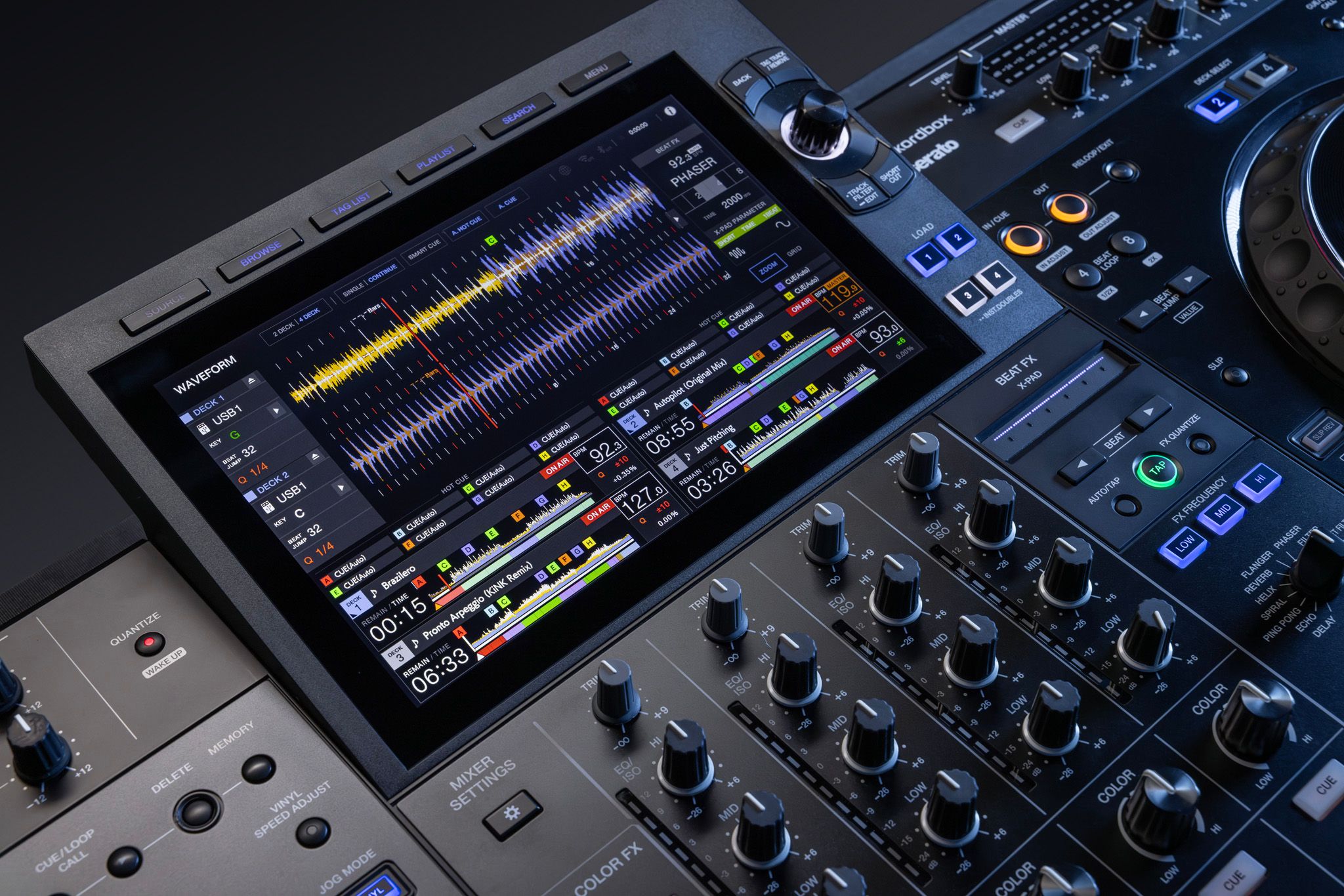
Like previous CDJs and Pioneer DJ all-in-ones, the AZ allows you to navigate the menus and your playlists through the touchscreen in a really intuitive way.
This increased screen size means you can now see 13 tracks at once – up from 8 on the XZ – so you can easily find the track you’re after. The new Touch Preview feature allows you to preview tracks in a playlist by just touching them and scrolling though without loading them. Touch Cue also allows you to preview upcoming parts of the track that’s currently playing.
Compatibility
The XDJ-AZ comes with inputs for two USB sticks as well as a range of other options for connecting different players and devices.
You can link up to 2 CDJs to create a complete 4-deck club setup. Pro DJ Link means that beat and on-air information are synced across the players, and you can share tracks from one USB across the whole setup. There are also phono line inputs to connect turntables or other players.

There’s a USB-C connection on the back to link up your laptop. This lets you use rekordbox for Mac/Windows in Performance mode or Serato DJ Pro. Both of these unlock for free when connected, so you don’t need to worry about a paid subscription. If you use the Wi-Fi connection for rekordbox Link Export mode, you can access tracks from your computer without needing to connect any cables.
You can now also access tracks from your phone using the rekordbox mobile app. With the screen on the AZ, you can browse through the library of tunes that are locally stored on the rekordbox app on your phone. These can then be loaded wirelessly and directly into the unit.
There’s a built-in Wi-Fi connection and an ethernet connection option in case you don’t trust the wireless internet wherever you’re DJing.
The integrated Beatport connection means you can log in directly on the AZ, browse through the Beatport charts or your playlists, and stream tracks straight away.
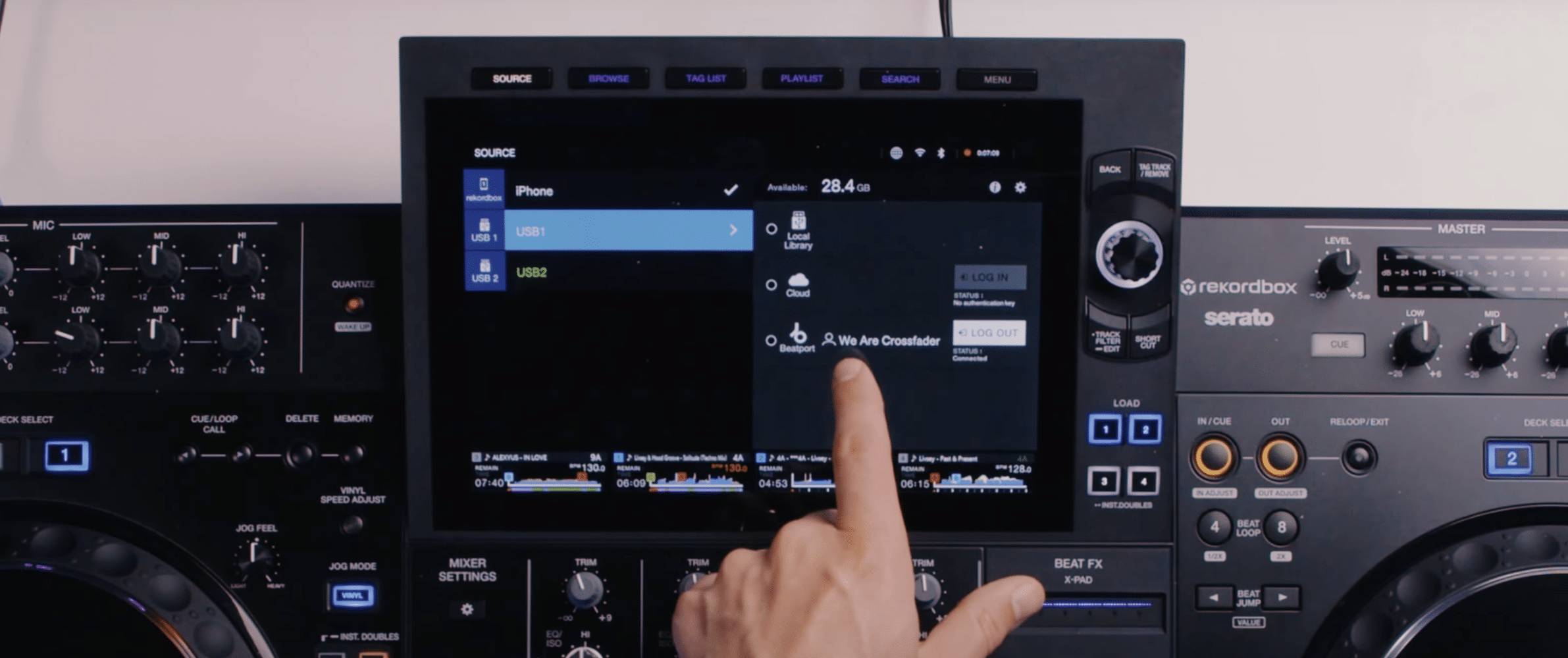
Bluetooth connectivity also allows you to connect a phone or another device and send that audio to channels 3 or 4. This is controlled through the mixer settings on the screen rather than the physical switches found on previous Pioneer DJ models.
The XDJ-AZ is the first product to support AlphaTheta’s new SonicLink connection for its headphones. This gives you an ultra-low-latency wireless connection to supported headphones without the need for the usual dongle. This proprietary technology won’t just work with any Bluetooth headphones, though; they have to be the specific AlphaTheta models. To find out more about this exciting new headphone tech, check out our full review of the new HDJ-F10.
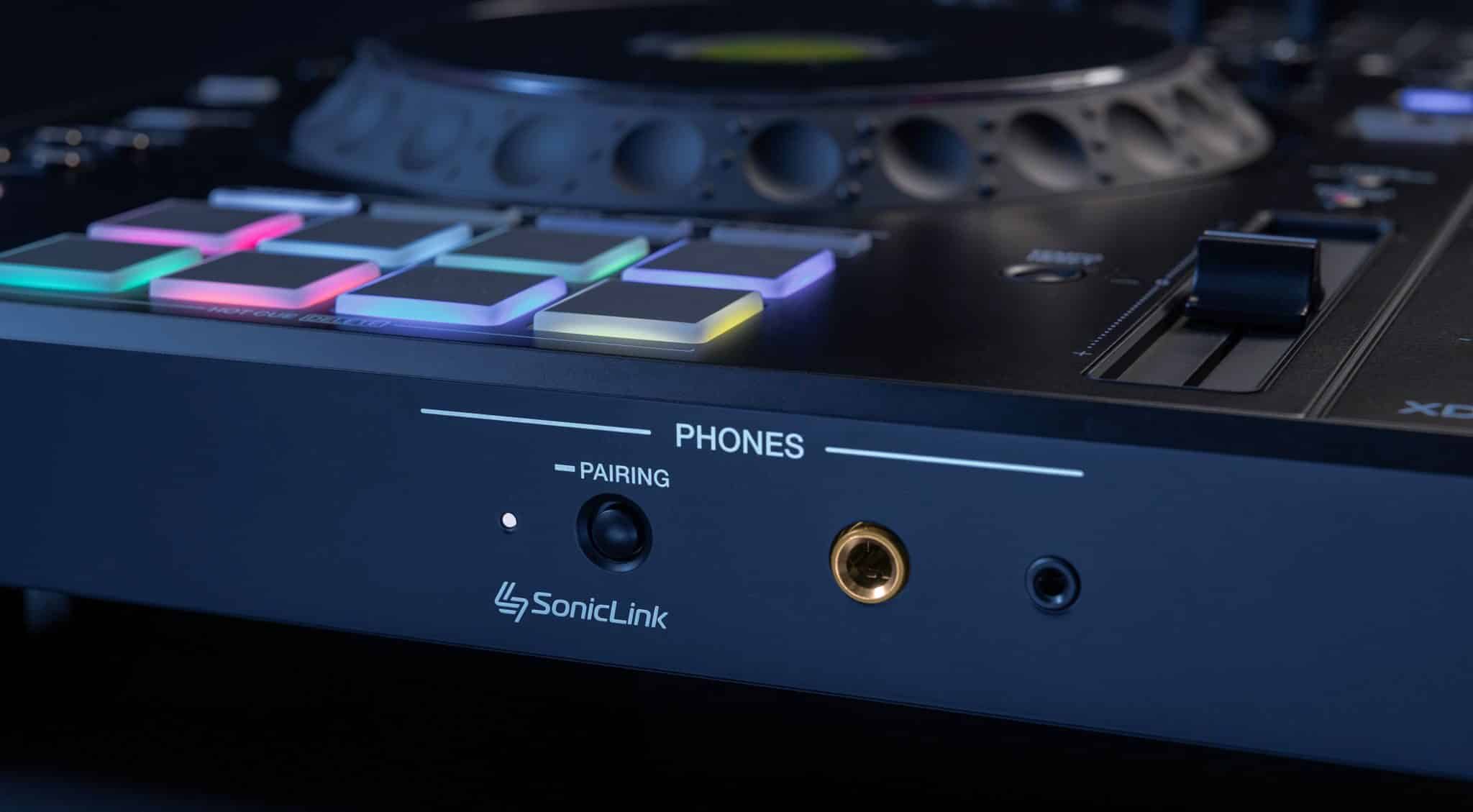
Decks
The two decks of the XDJ-AZ inherit a lot from the club-standard CDJ-3000s. The feel is incredibly similar, they’re the same size, and they also have the mechanically adjustable jog speed and the ability to switch between vinyl and CDJ modes.
In the middle of each deck, you’ll find a display showing you key information on the track that’s loaded. This can also be switched to display a custom logo loaded on your USB drive or the parameters for the chosen performance pad mode. Each deck is also surrounded by a coloured ring that will light up red to show that it’s on-air.
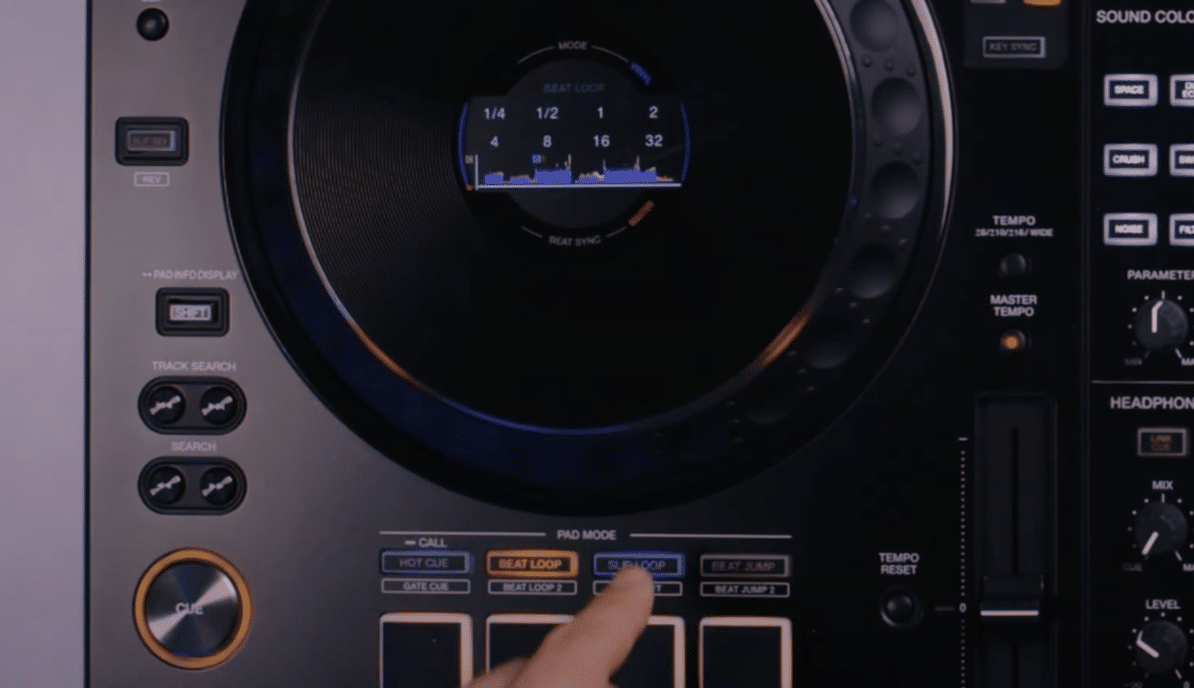
Right above the jog-wheels, you’ll find the one feature that DJs have been desperate for from a Pioneer all-in-one. These buttons let you switch between decks and use up to 4 at once, all from one USB. They will also light up to show clearly which one is currently active so you don’t accidentally load a track or nudge the wrong deck.
The performance pads at the bottom of each deck are probably the clearest area where the AZ differs from CDJs. There are 8 pads which can be used for a variety of different functions. Pressing the buttons above the pads will change the mode, and pressing it again will switch to the secondary mode for each, giving a total of 8 different pad modes. These include standard hot cues as well as a gate cue, which only plays the track while the pad is held down, more like the main cue button. There’s also Beat Loop and Beat FX, each with a secondary level for extra time values, as well as Slip Loop and Release FX.
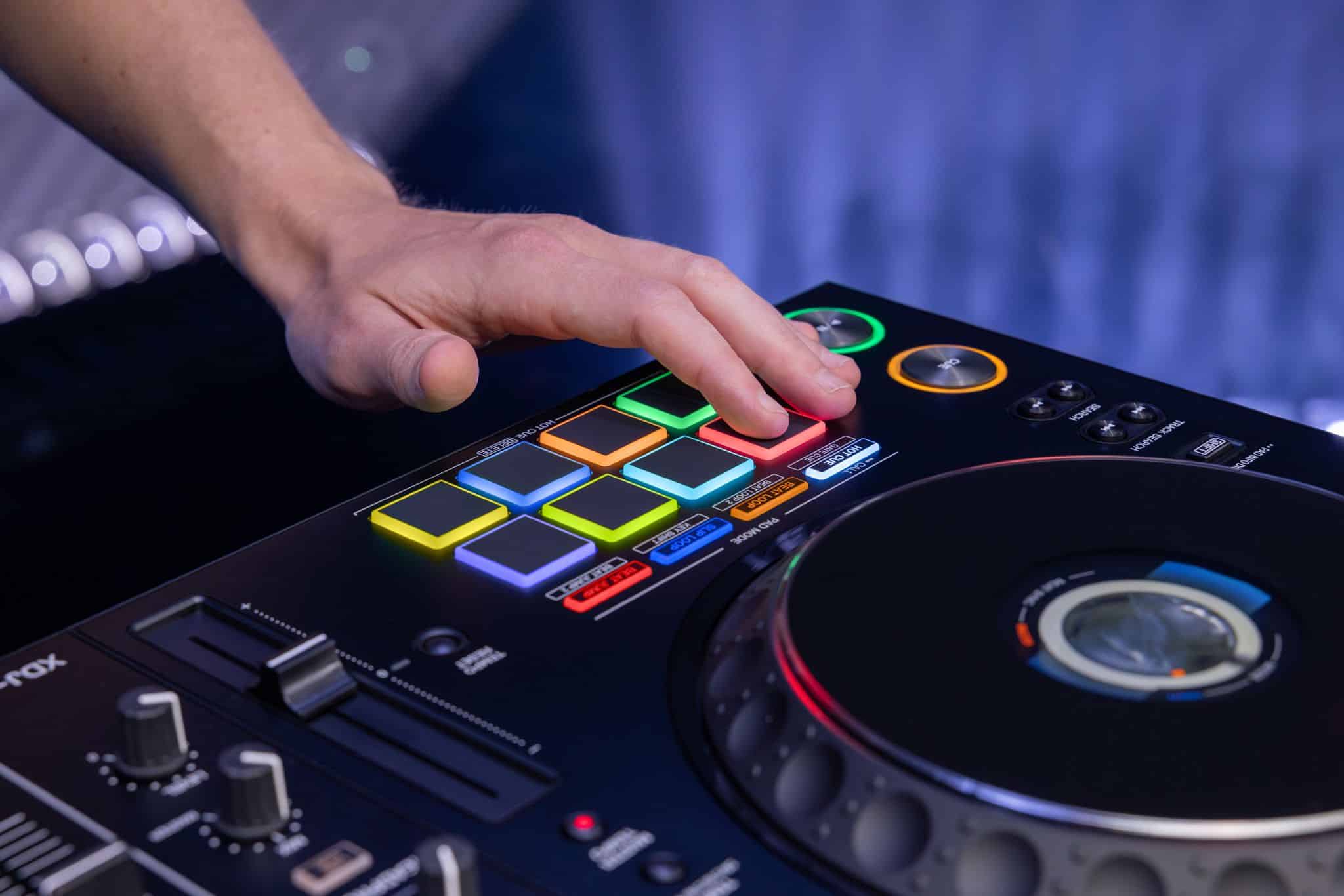
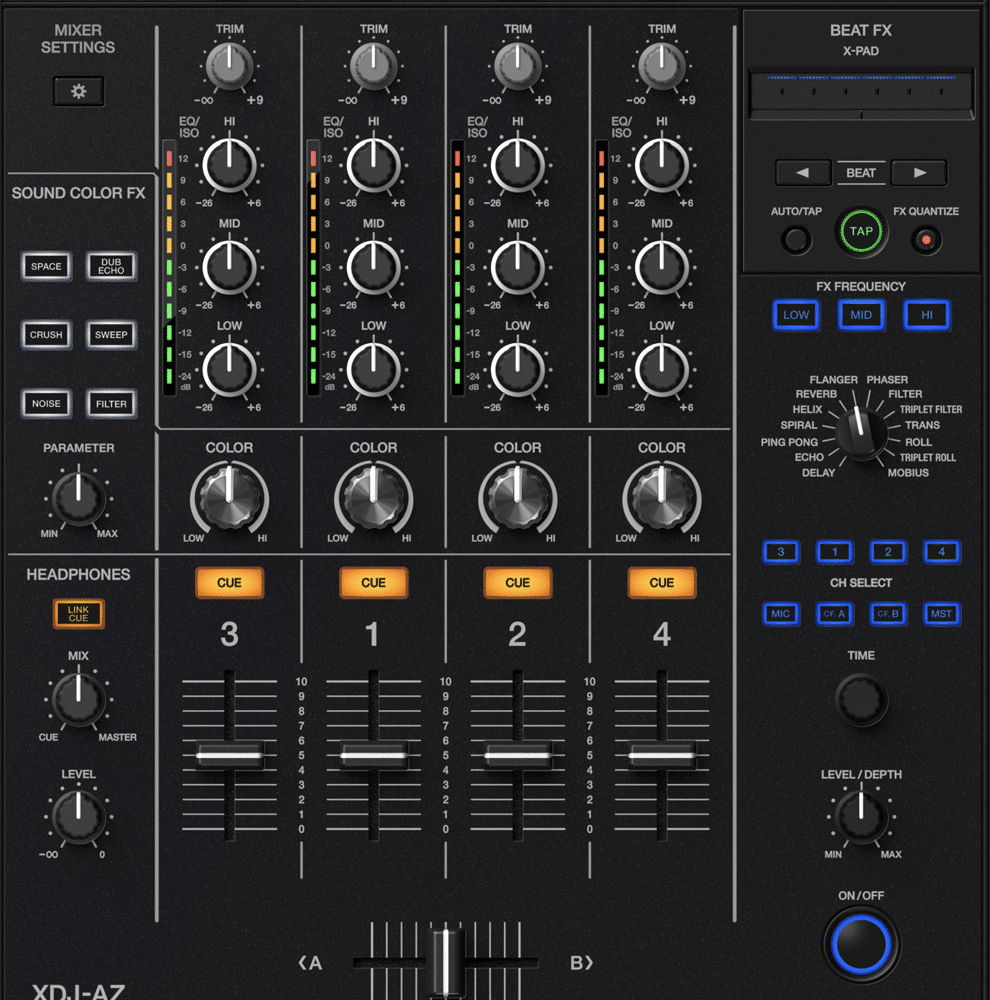 Mixer
Mixer
The mixer section will largely feel familiar to anyone experienced with Pioneer DJ gear, but there are a few new features and changes.
You’ll find all the features you’d expect from a standard club mixer, like the DJM-A9 this inherits from. Each channel has a 3-band EQ that can be switched between isolator and EQ mode. There are also six sound-colour effects for each channel.
However, quite a few of the mixer settings that used to be controlled on the mixer itself have now been removed and are controlled digitally through the touch screen. This streamlines the mixer considerably and really allows you to focus on DJing rather than fiddling with settings.
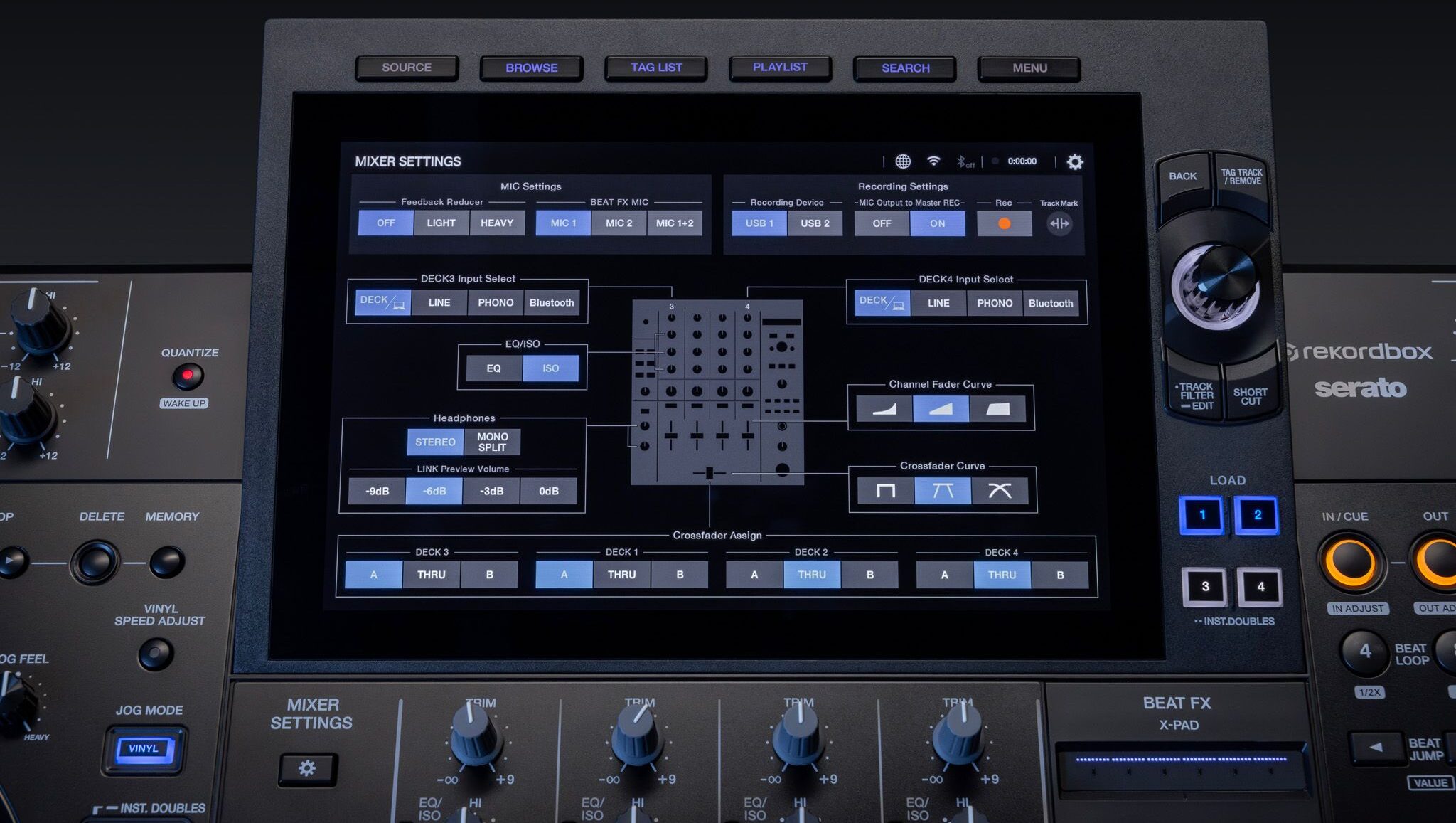
The effects section has also been updated with the new effects from the A9 mixer, including the Mobius effect and triplet filter and rolls. There’s also a touch-sensitive X-Pad that allows you to control the parameters of the Beat FX by moving your finger across it. Unlike previous iterations of this X-Pad, when you move your finger on it and then release, it will go back to the value it was before, allowing you to do temporary stutters and effects.
The headphone section has ¼ inch and 3.5mm outputs and the standard controls for level and cue mix. You also get Link Cue which allows you to send anything from the DJ Link through the cue as well.
Design and build
As you’d expect from any AlphaTheta or Pioneer DJ flagship gear, the build quality is second to none. All of the knobs and faders feel sturdy and durable, while the jog wheels have the same slick feel as the ones found on the CDJ-3000s.
Overall, the design and look of the AZ are slightly more streamlined and minimal than its predecessors. As we mentioned, many of the functions that used to be physical buttons, such as crossfader curve selection, are now controlled via the screen. This frees up a lot of space and makes the unit less cluttered. Similarly, there are subtle design changes, such as losing some printed lines and indicators, which makes it look a bit less busy without sacrificing any usability.
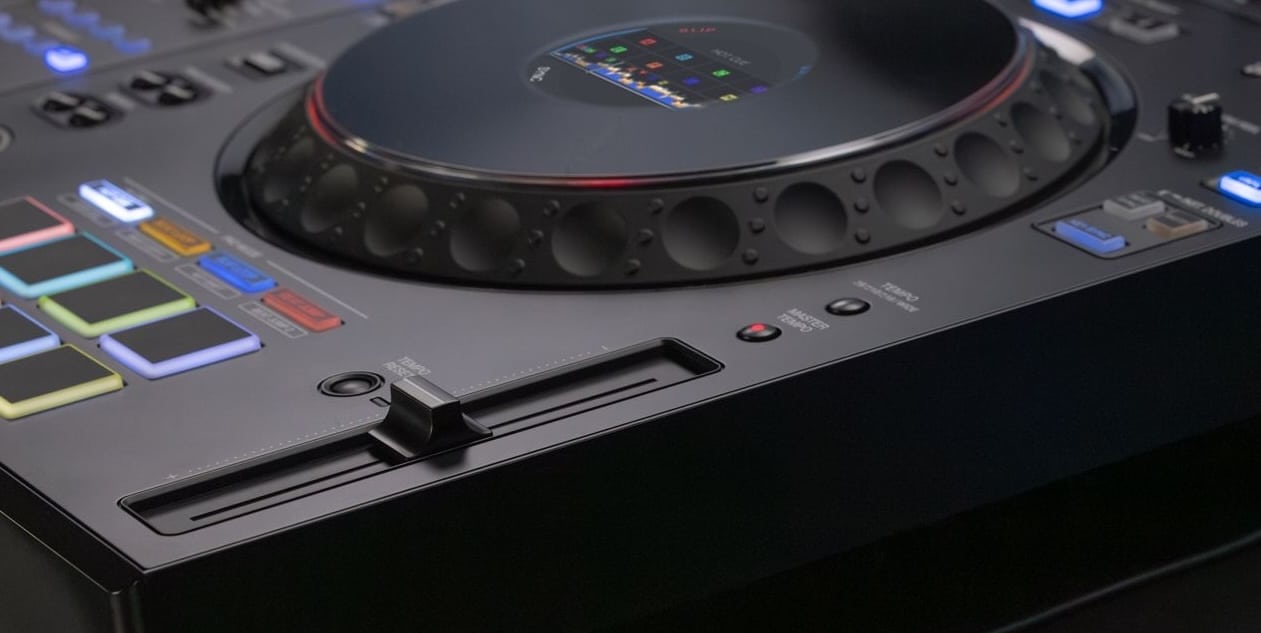
Price, value and final thoughts
XDJ-AZ Price: €3,299 including VAT / $3,199 excluding tax / £2,799 including VAT
So, is the XDJ-AZ worth the money? It retails at £2,799, putting this right at the top price bracket for all-in-one DJ units. At this price, it’s hard to say it’s great value, but it could represent a decent investment for pro DJs and smaller venues. Considering that two CDJ-3000s and a DJM-A9 mixer will set you back well over $7000, this is easily the closest setup you’re going to be able to get and costs considerably less money.
For gigging pros or keen amateurs, the AZ offers the same functionality and feel as the club-standard setup but is much more portable.
The XDJ-AZ would also likely be a great pick for venues and clubs whose budgets don’t stretch to the full CDJ setup. You still get the same form and feel that any DJ will be instantly familiar with. That, combined with the ability to link up external hardware, makes this a highly versatile option.
XDJ-AZ Technical Specifications
| Feature | Details |
|---|---|
| Software | rekordbox for Mac/Windows, rekordbox for iOS/Android, Serato DJ Pro |
| Frequency Response | 20 Hz – 20 kHz |
| S/N Ratio | 115 dB (USB) |
| Total Harmonic Distortion | 0.0018 % (USB) |
| Terminals | Inputs: LINE/PHONO x 2 (RCA), MIC x 2 (XLR & 1/4” TRS Jack) Outputs: MASTER x 2 (XLR x 1, RCA x 1), BOOTH x 1 (1/4” TRS Jack), PHONES x 2 (1/4” stereo jack x 1, 3.5 mm stereo mini jack x 1) USB: USB Type-A x 3, USB Type-C x 1 |
| Wireless LAN | Supported Standards: IEEE 802.11 a / b / g / n / ac Frequency Band: 2.4 GHz / 5 GHz |
| Bluetooth | Wireless System: Bluetooth Ver. 5.3 Compatible Codecs: SBC, AAC |
| SonicLink Frequency Band | 2.4 GHz |
| Others | LAN port (100BASE-TX) x 1 |
| Power Supply | AC 100 V, 50 Hz / 60 Hz |
| Maximum Dimensions (W x D x H) | 895 x 504.1 x 133.4 mm / 35.24” x 19.85” x 5.25” |
| Weight | 13.5 kg / 29.7 lbs |
| Accessories | Power cord, Quick Start Guide, Precautions for use |
Comparisons to competitors
XDJ-AZ vs Opus Quad
The most obvious competitor to the XDJ-AZ comes from Pioneer DJ/AlphaTheta itself – the Opus Quad. Both units cost the exact same price ($3199), and the feature list is pretty similar across the board. The main differences are that the AZ has features from AlphaTheta’s flagship club gear, including CDJ-3000 jog wheels and A9 mixer effects, while the Opus Quad takes after the previous generation CDJ-2000NXS2 and DJM-900NXS2 for these.
The Opus Quad also doesn’t support linking up CDJs, and it’s designed more to be a standalone system whereas the AZ could form the heart of a larger setup.
The Opus Quad, however, does give you an extra USB slot, XY pad effects and the new Zone Output function that lets you control the music across several rooms, all from one device. Its more modern aesthetic design is also more eye-catching than the slightly utilitarian AZ.
XDJ-AZ vs XDJ-XZ
The XDJ-AZ is intended as a direct replacement for the previous XDJ-XZ. There are a number of upgrades, but the most significant is that this is now a true 4-channel standalone. The XZ could only run 2 channels of the USB and the other two channels on the mixer were just for linking up external CDJs or turntables.
The AZ also brings in more modern features compared to the XZ, including Wi-Fi and streaming capabilities, and its screen is considerably larger.
For more info, check out our complete comparison of the XDJ AZ and XDJ XZ.
XDJ-AZ vs XDJ-RX3
The next step down in Pioneer DJ/AlphaTheta’s all-in-one lineup is the XDJ-RX3. While this is a highly capable unit, there are still a few reasons it’s not on the same level as the AZ. Firstly, it’s limited to just two channels. It also lacks the AZ’s Wi-Fi and streaming capabilities.
The jogwheels are also smaller, and overall the RX3 is more portable. This is useful for event DJs who need to carry a lightweight DJ unit with them, but it comes at the cost of some of the premium feel and features of the AZ.
XDJ-AZ vs Denon Prime 4+
The Denon Prime 4+ is another 4-channel all-in-one DJ unit that will be seen as a natural competitor to the XDJ-AZ. There are a lot of similarities, and they’re both highly capable machines but cater to a slightly different audience.
The Prime 4+ comes with a great range of options for connectivity. As well as the 4 channels you can run internally from a USB, you’ve also got all 4 channels able to connect to external hardware such as turntables. It’s also got a wider range of streaming options, with the power to connect to Apple Music, Beatsource, Beatport and Soundcloud.
Unfortunately, like a lot of Denon gear, the effects section of the Prime 4+ is a letdown. In our opinion, the AlphaTheta effects sound much better and are easier to use, but some of this may come down to personal preference and use cases.
For many DJs, the Prime 4+’s biggest downside is simply that it’s not a Pioneer DJ/AlphaTheta product. A big bonus of owning an XDJ-AZ is that you’ll feel immediately at home when you go play at a club or venue, the vast majority of which will have a setup with CDJs. With the Denon, however, many functions work in subtly different ways and you’ll have to use a different software – Engine – to process your tracks.
The Prime 4+ would be a great pick for DJs after a portable option to take to function gigs where they need a lot of versatility. At £1700, it also comes in at a far lower price than the AZ, despite offering similar functionality. The XDJ-AZ, on the other hand, would be a better option for anyone who wants the closest thing to a pro club setup with the full feature set and familiarity.
Read our complete comparison of the XDJ AZ and Prime 4 to find out more.
Ready to hear what the GRV6 can do? Check out this showcase mix from pro DJ and Crossfader tutor Lawrence as he explores its full potential.
Does the XDJ-AZ work with Serato?
How much is XDJ-AZ in the UK?
Is rekordbox free for XDJ-AZ?
Can you plug turntables into XDJ-AZ?
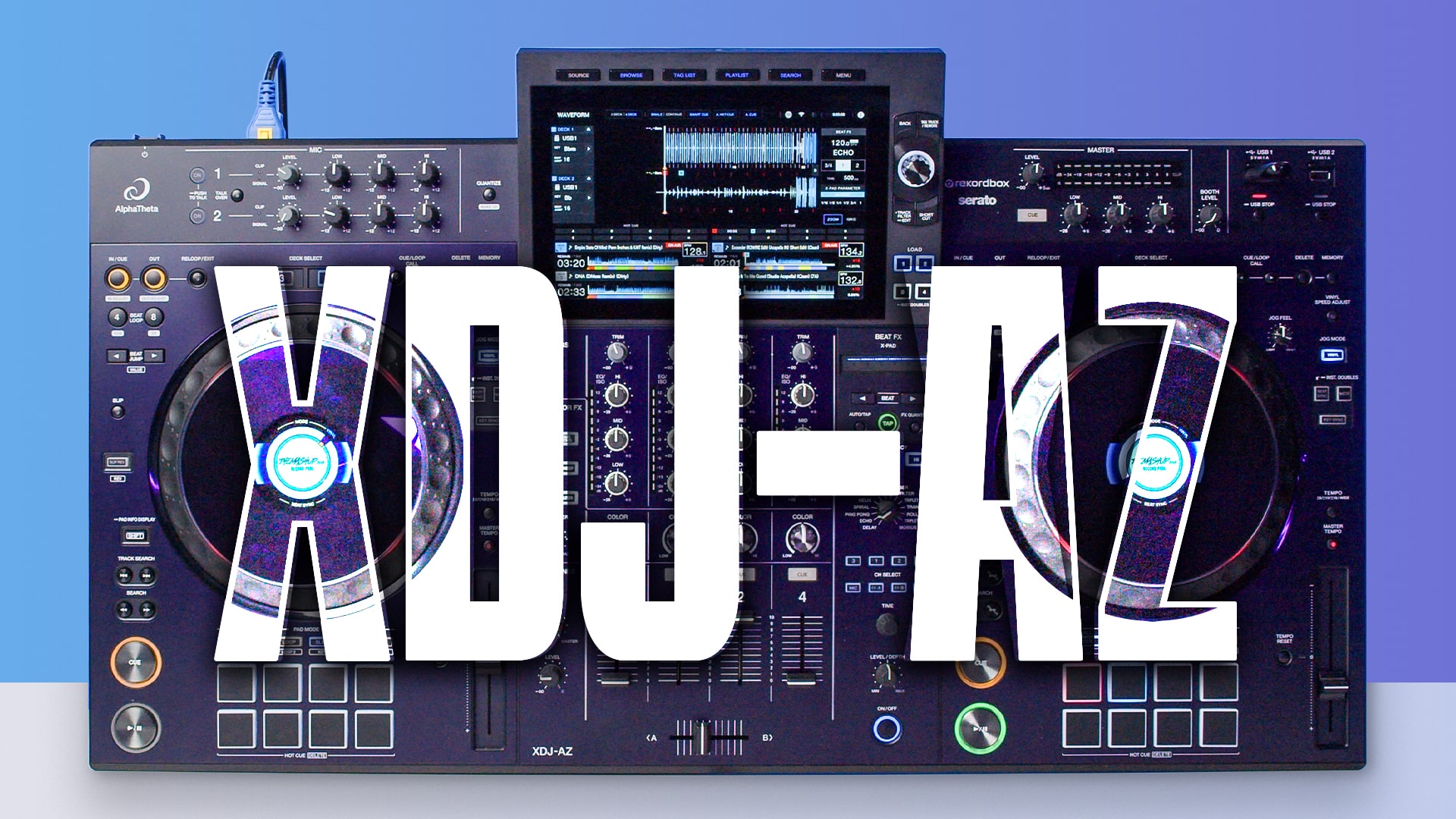

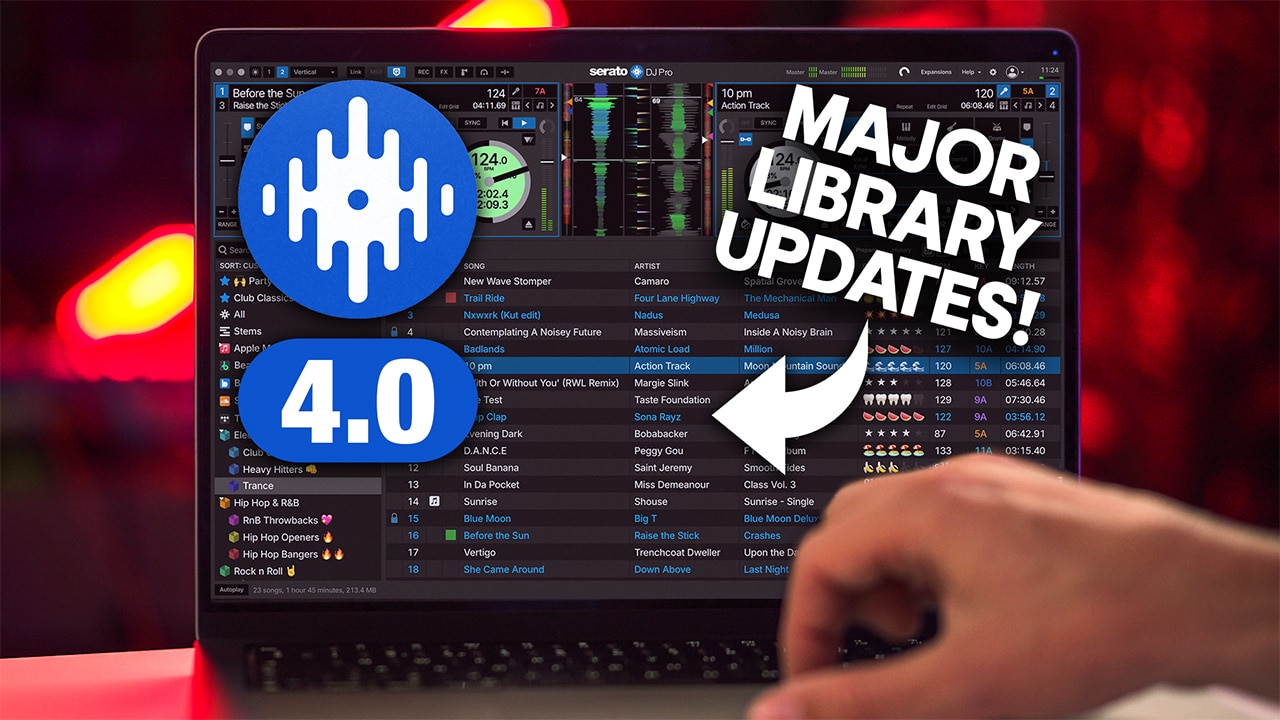

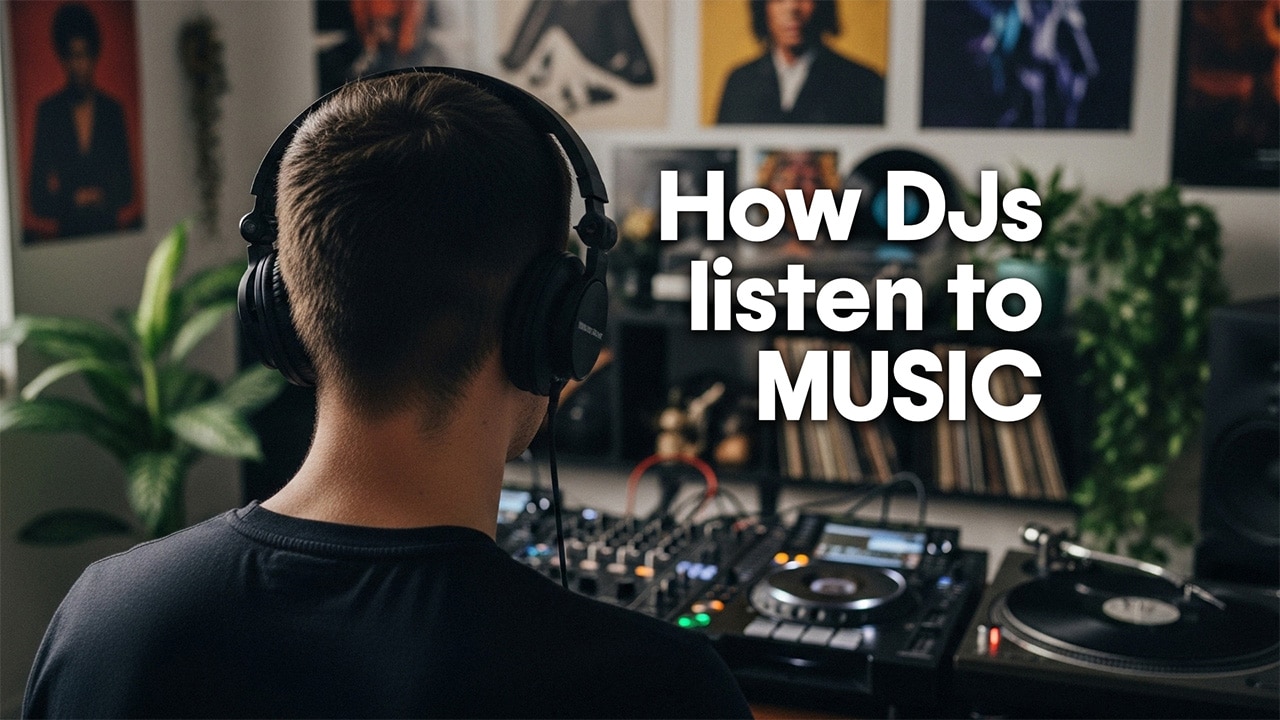
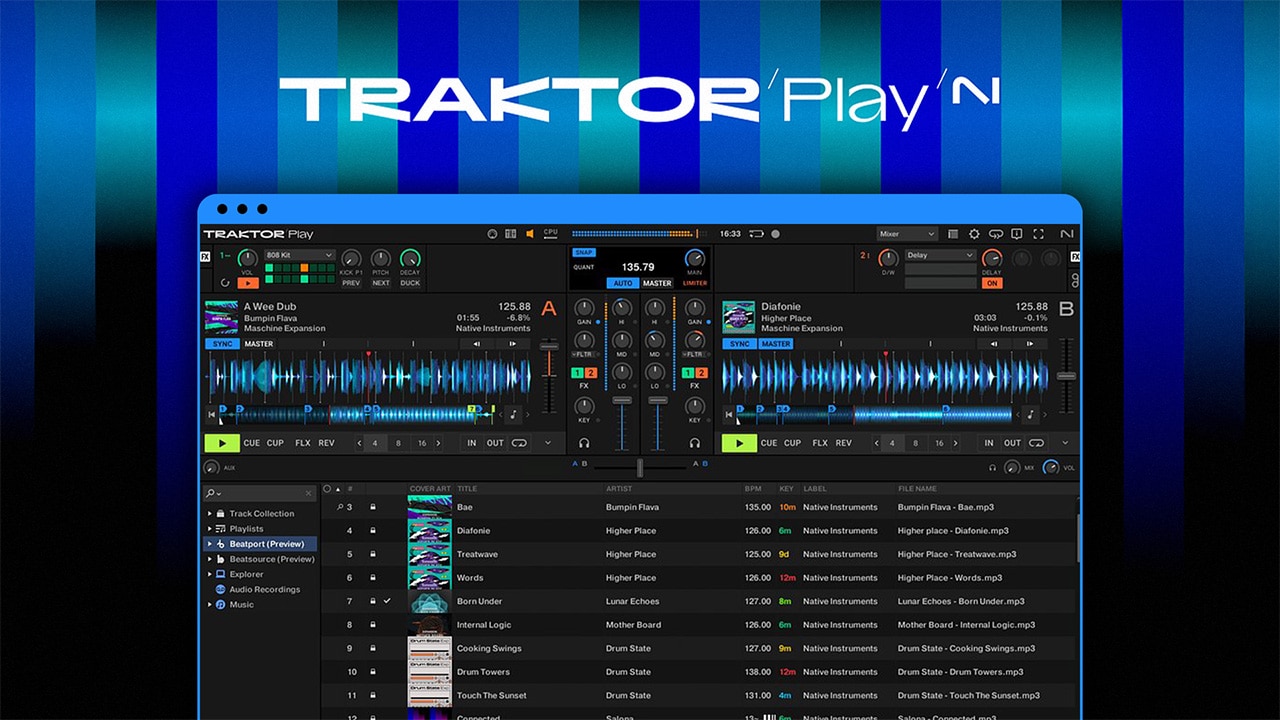
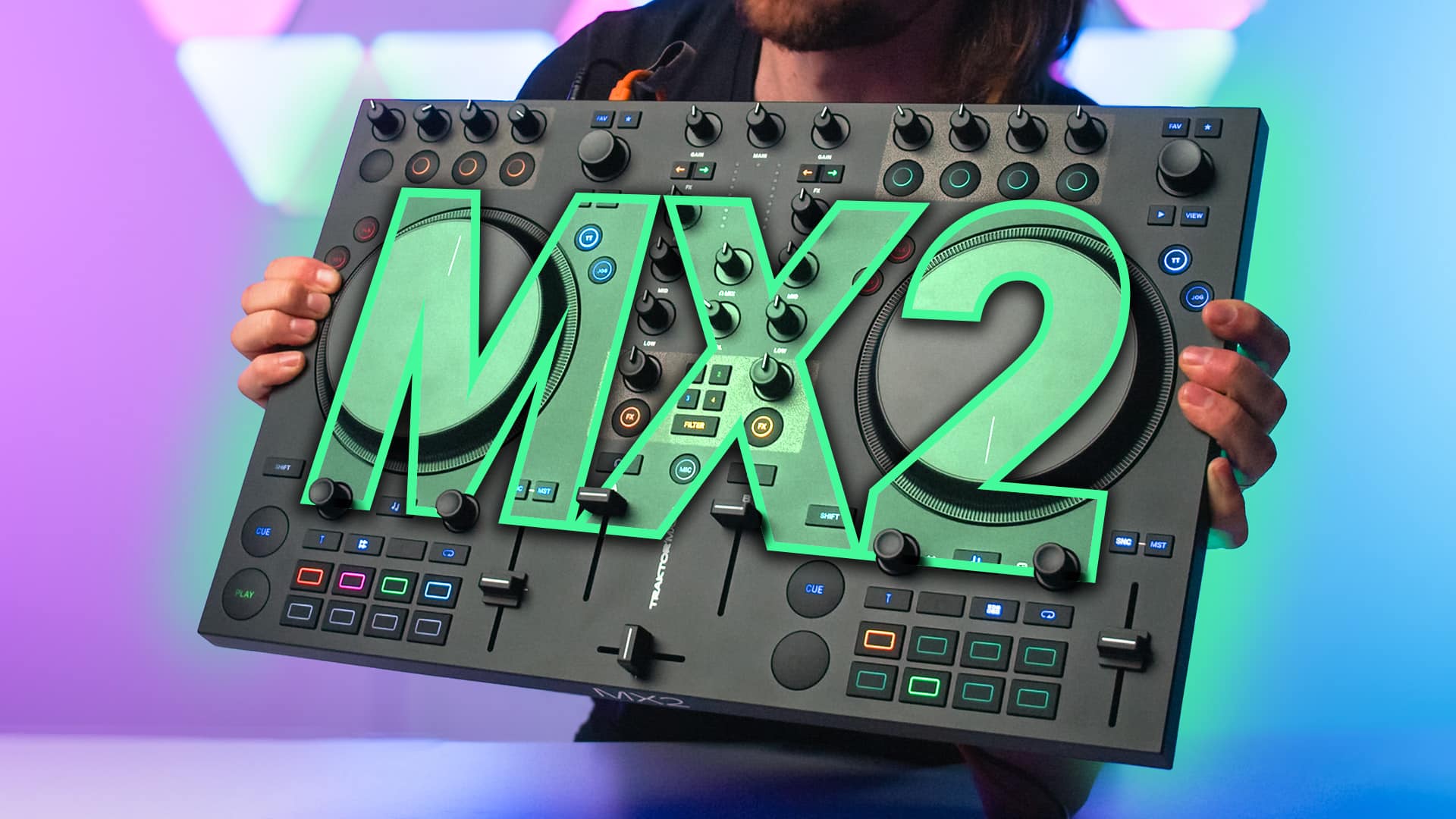
Can we use STEM ON THIS CONTROLLER?
You can’t use stems in standalone mode unfortunately but you can use it as a controller for rekordbox where stems will work
I believe the statement that the XDJ-AZ supports TIDAL is misleading. As of now, the official specs (and user feedback) show that the device supports Beatport Streaming via StreamingDirectPlay, but TIDAL is not supported as a built-in streaming source. Could you please correct this to avoid confusion?
Tidal can be used if you’re using it as a controller but we’ve updated this now to be clearer
I seem to miss the Vinyl speed adjust knob. As well as I don’t see if you can record directly on an USB stick like on the XZ.
I was hoping to have the hot cue’s like on the CDJ 3000
But overall, very nice
You can still record directly onto a USB in similar way to the XZ.